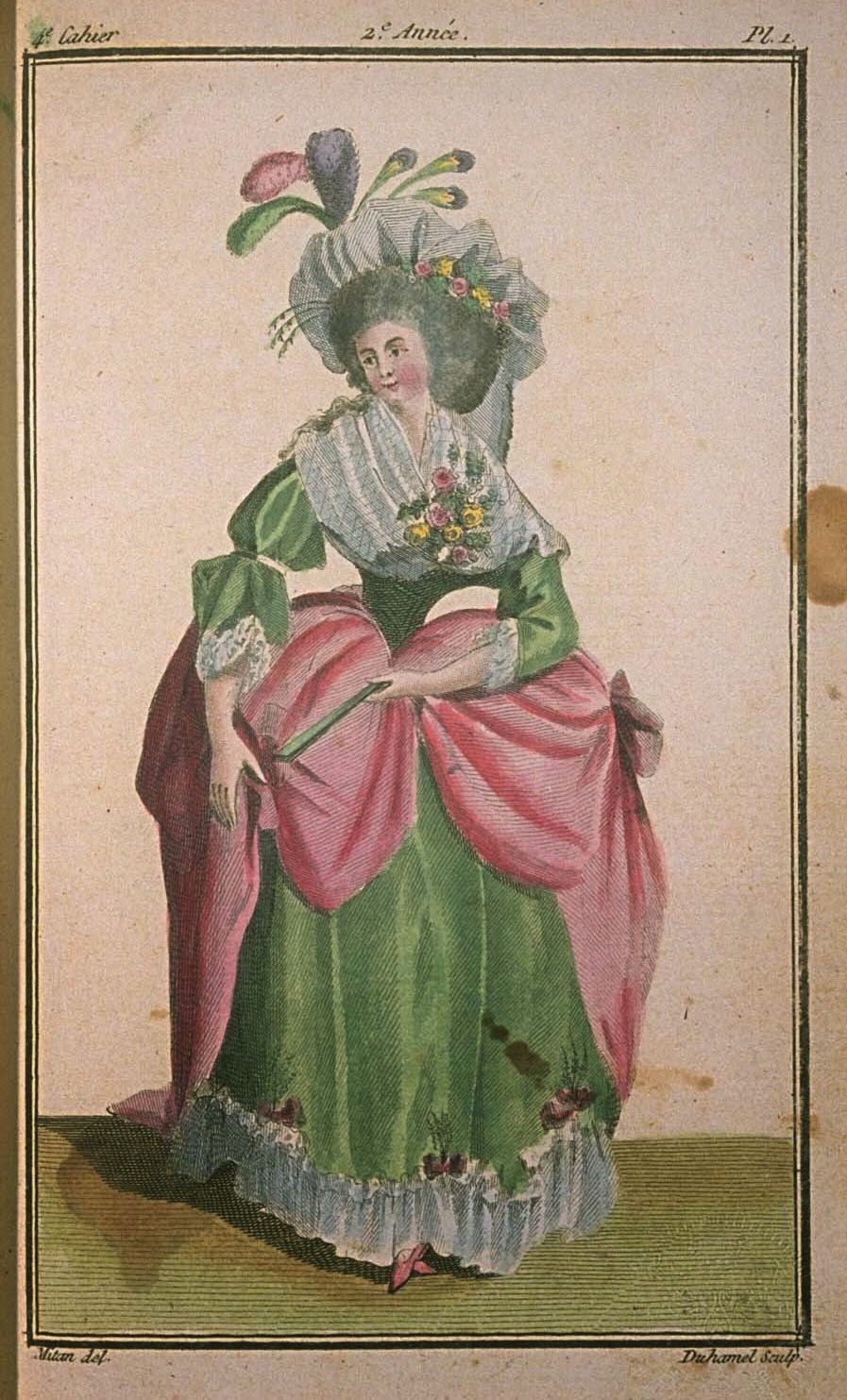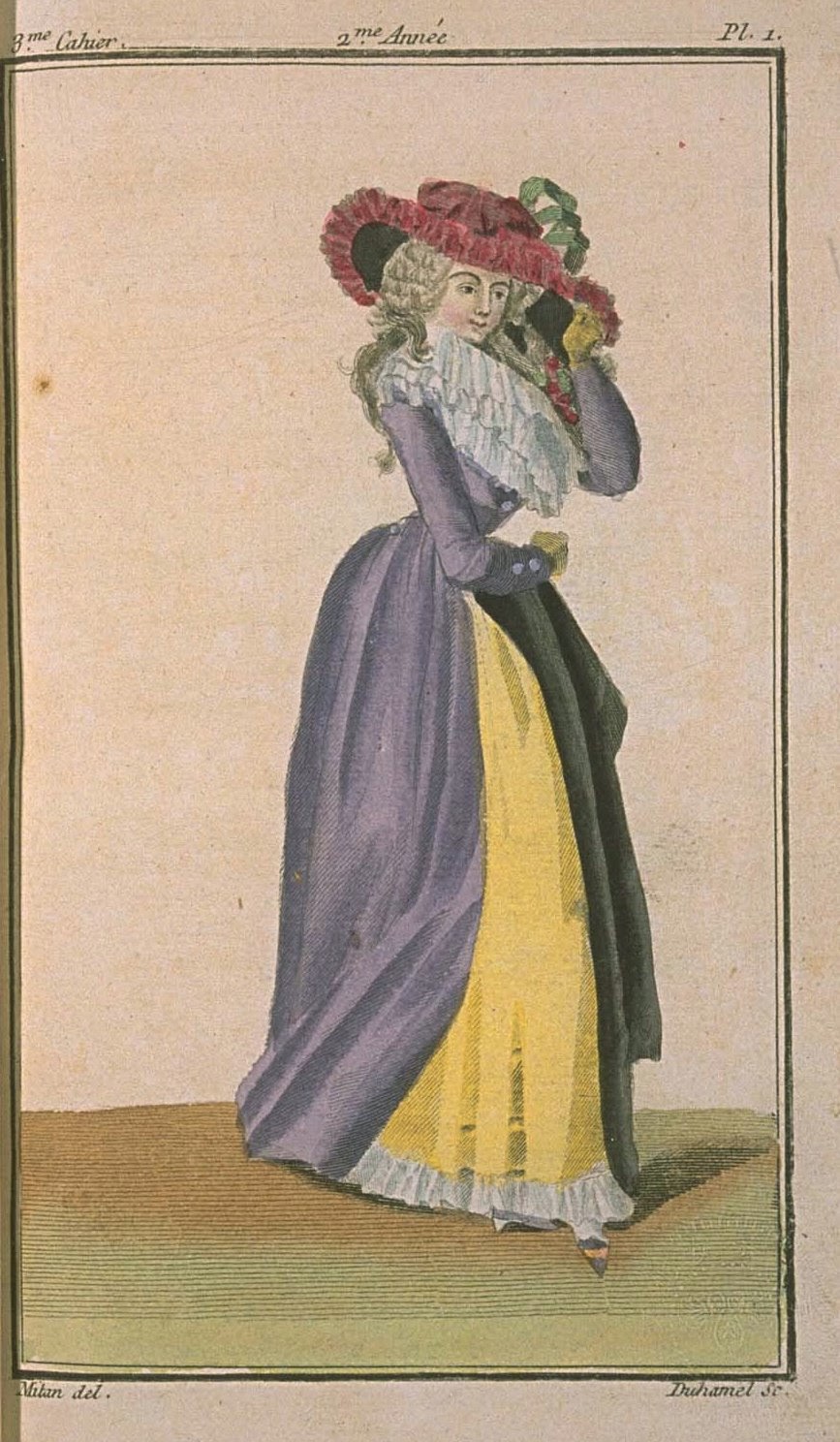Magasin des Modes, 4e Cahier, Plate II

December 20, 1786 A young Englishman in full dress. Here, men never appear without a sword; it is easy to see that in London, this practice is not the same. One can see that in London, they are also fully dressed in a frock coat. The one worn by the young Englishman is of a puce little velvet on a yellowish ground. It is trimmed with flat, medium-sized gilded buttons, all plain; it is lined with a puce silk twill, mixed. Under this frock coat, he wears a gilet of sea-green satin, with wide pink stripes forming large squares; breeches of black satin, buttoned on the sides with seven buttons, and the garters of which are fastened with narrow rectangular silver buckles. White stockings. In his watch pockets, two watches, from one of which hangs a simple cord of Sky blue silk, with a large key at the end, and from the other hangs a cord of silk and gold,also with a large key. Her shoe buckles are silver, in very wide squares, and trimmed with pearls. On his neck, wrapped th



